To Catch A Pigeon
SciFri followed a biologist on a hunt for New York pigeons.
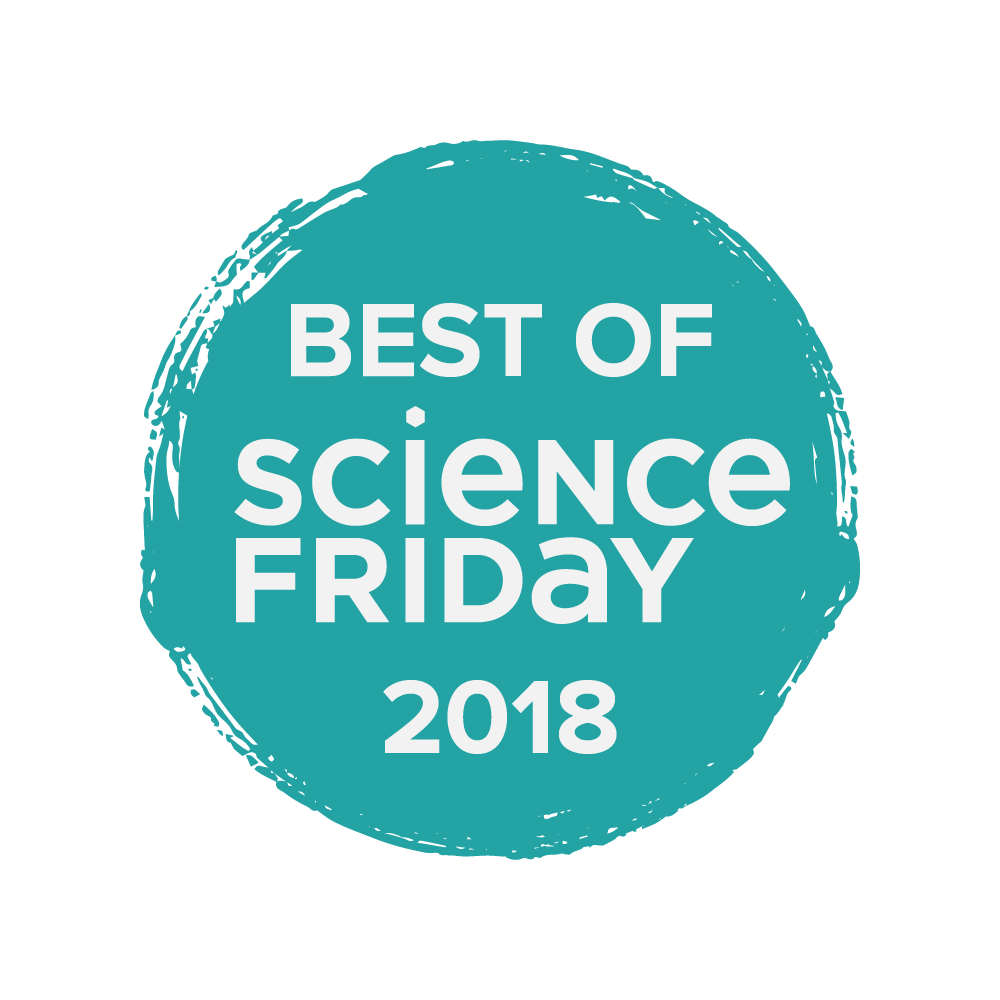 Ever try to shoo a group of pigeons that crossed your path? Tired of dodging close flyovers of those pesky gray birds? The urban pigeon may feel like just another city nuisance, but there’s a lot they can teach us about how wildlife is adapting to co-exist with us. How are pigeons in New York related to pigeons in Boston, or Washington D.C.? Why are pigeons thriving compared to other birds? How is their gene pool changing in response to the daily stresses of city living?
Ever try to shoo a group of pigeons that crossed your path? Tired of dodging close flyovers of those pesky gray birds? The urban pigeon may feel like just another city nuisance, but there’s a lot they can teach us about how wildlife is adapting to co-exist with us. How are pigeons in New York related to pigeons in Boston, or Washington D.C.? Why are pigeons thriving compared to other birds? How is their gene pool changing in response to the daily stresses of city living?
The science is there… if you can chase it down. That’s where Elizabeth Carlen steps in. She’s an urban evolution graduate student at Fordham University who studies how pigeons are evolving in these metropolitan areas. SciFri producer Christie Taylor joins Carlen on a pigeon hunt, following the birds in the urban jungle of New York City. Join in on the wild-pigeon chase by listening to the audio diary while scrolling through the photos below.
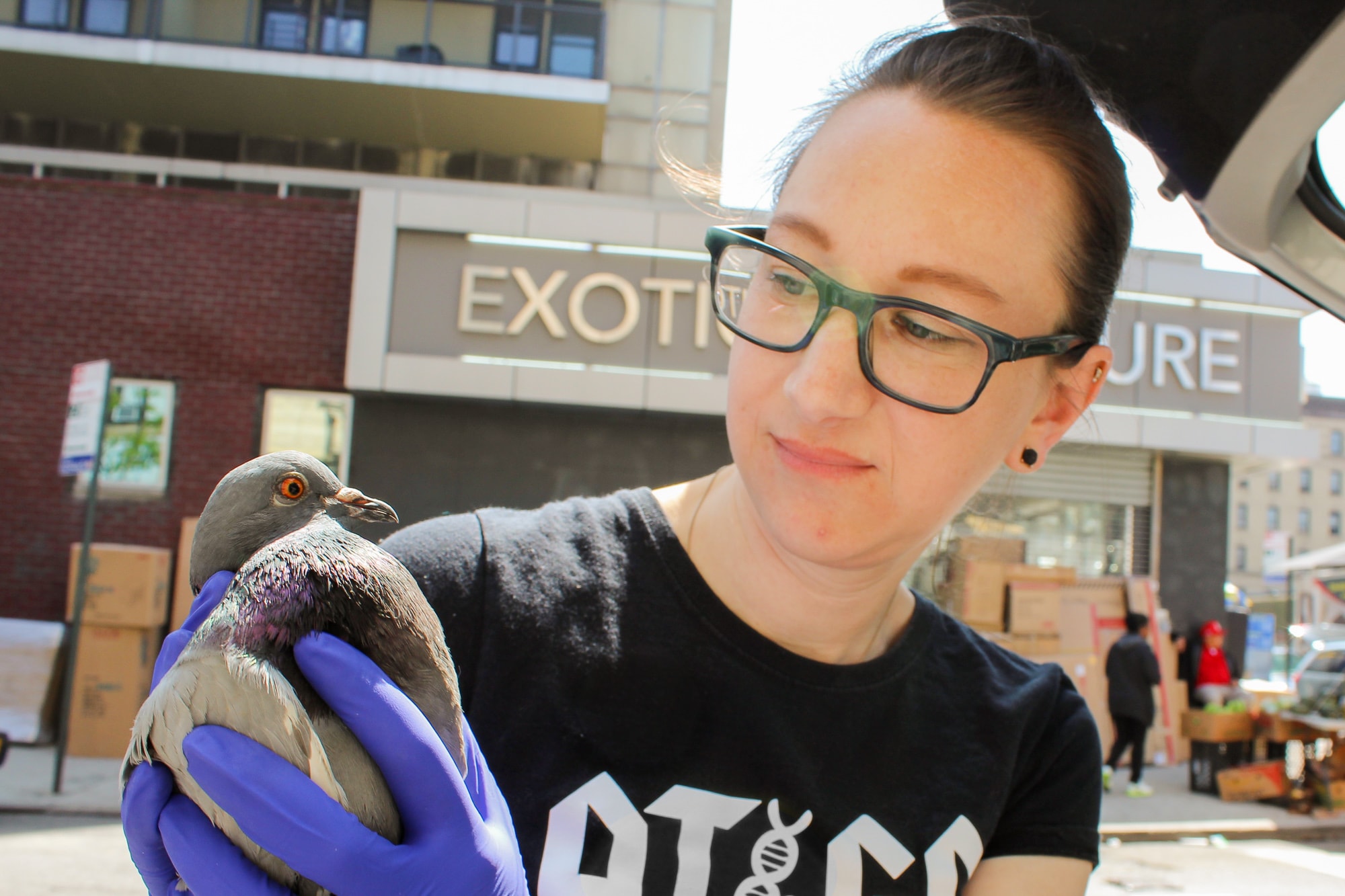
Elizabeth Carlen, graduate student in urban evolution at Fordham University in New York City. Credit: Christie Taylor
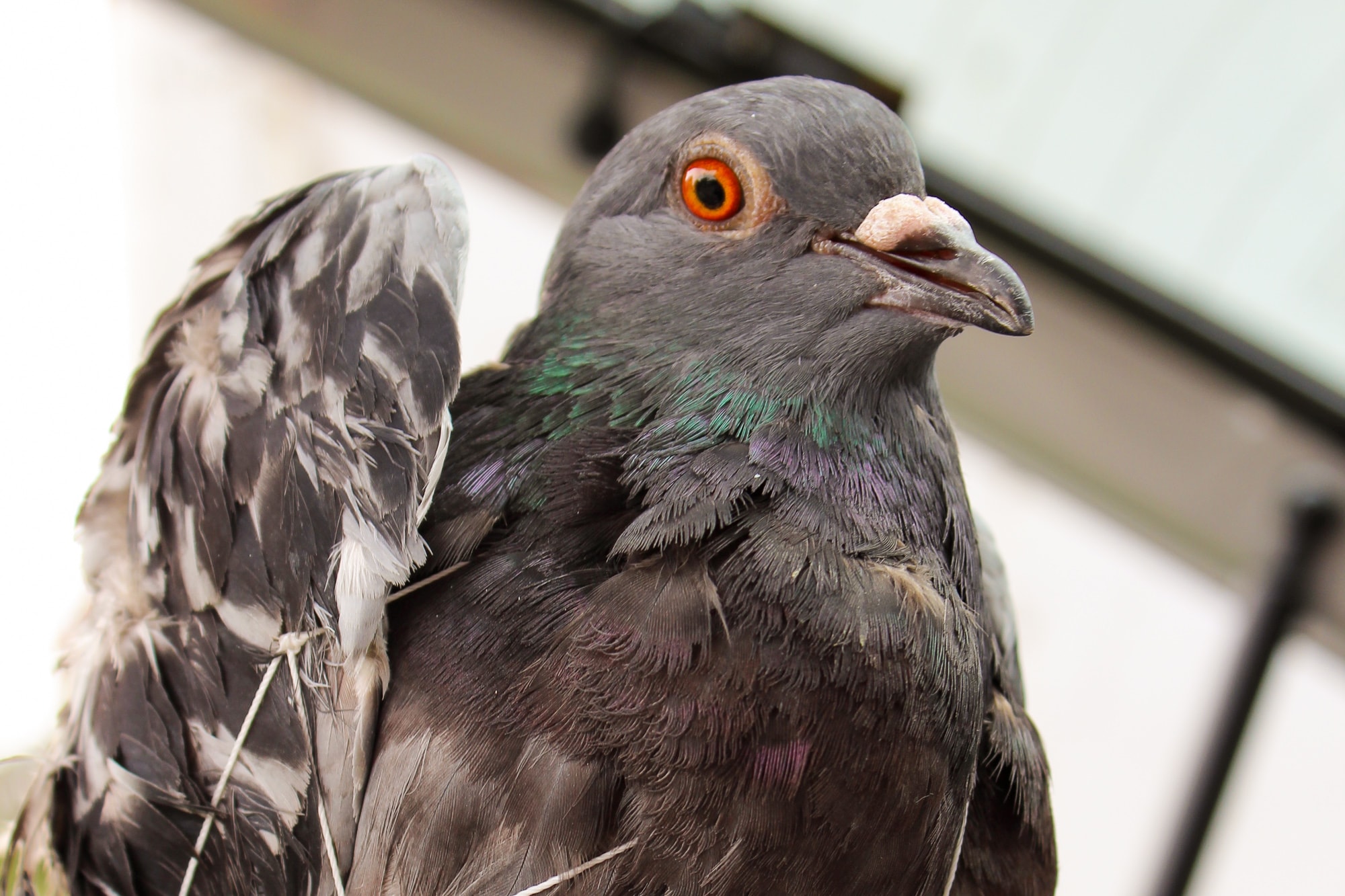
A New York City pigeon. Credit: Christie Taylor
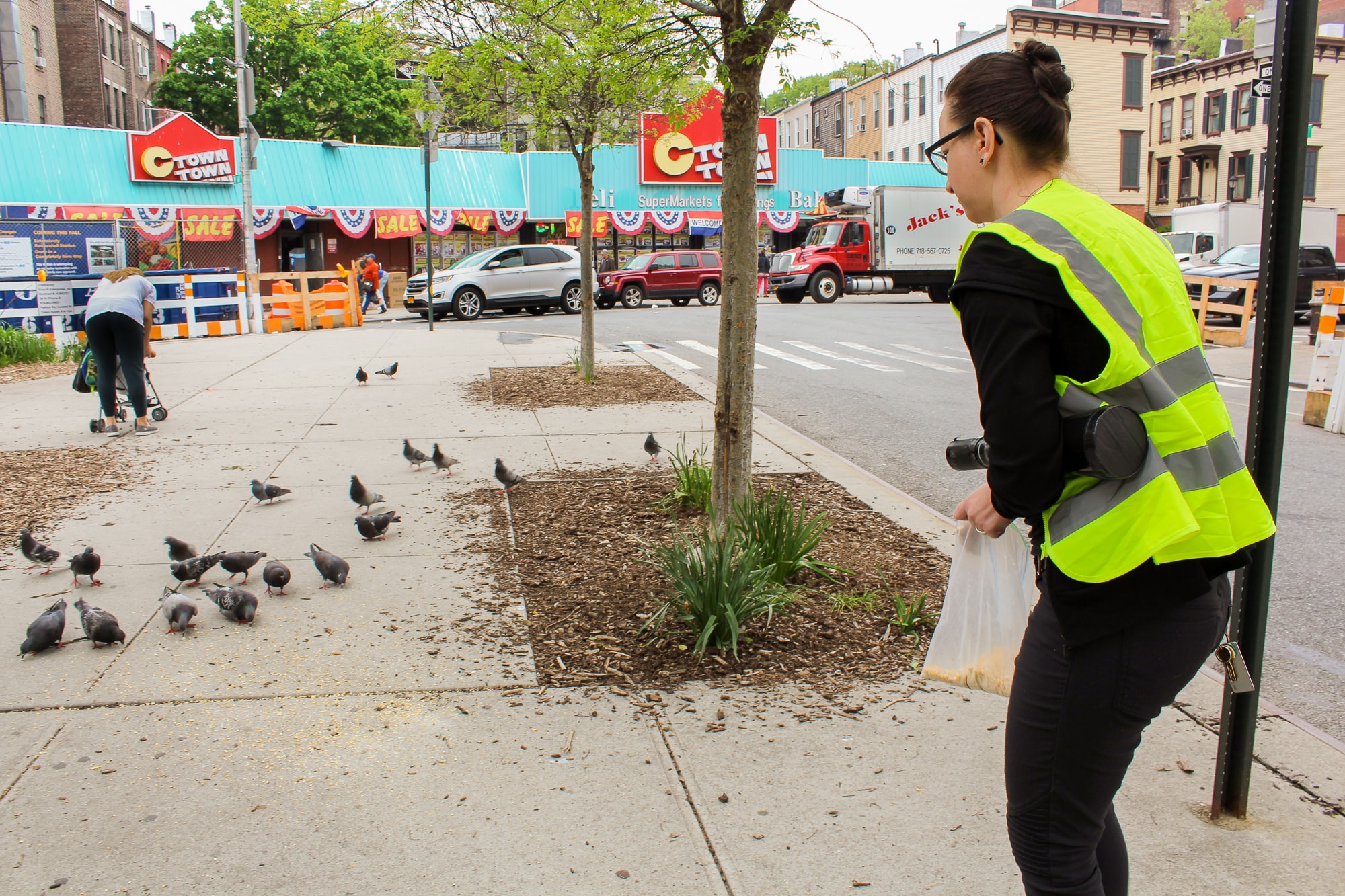
Carlen looks for groups of birds that are large, and ideally distracted by food. This makes it easier for her to get close to them, and more likely that she'll successfully catch at least one. Credit: Christie Taylor
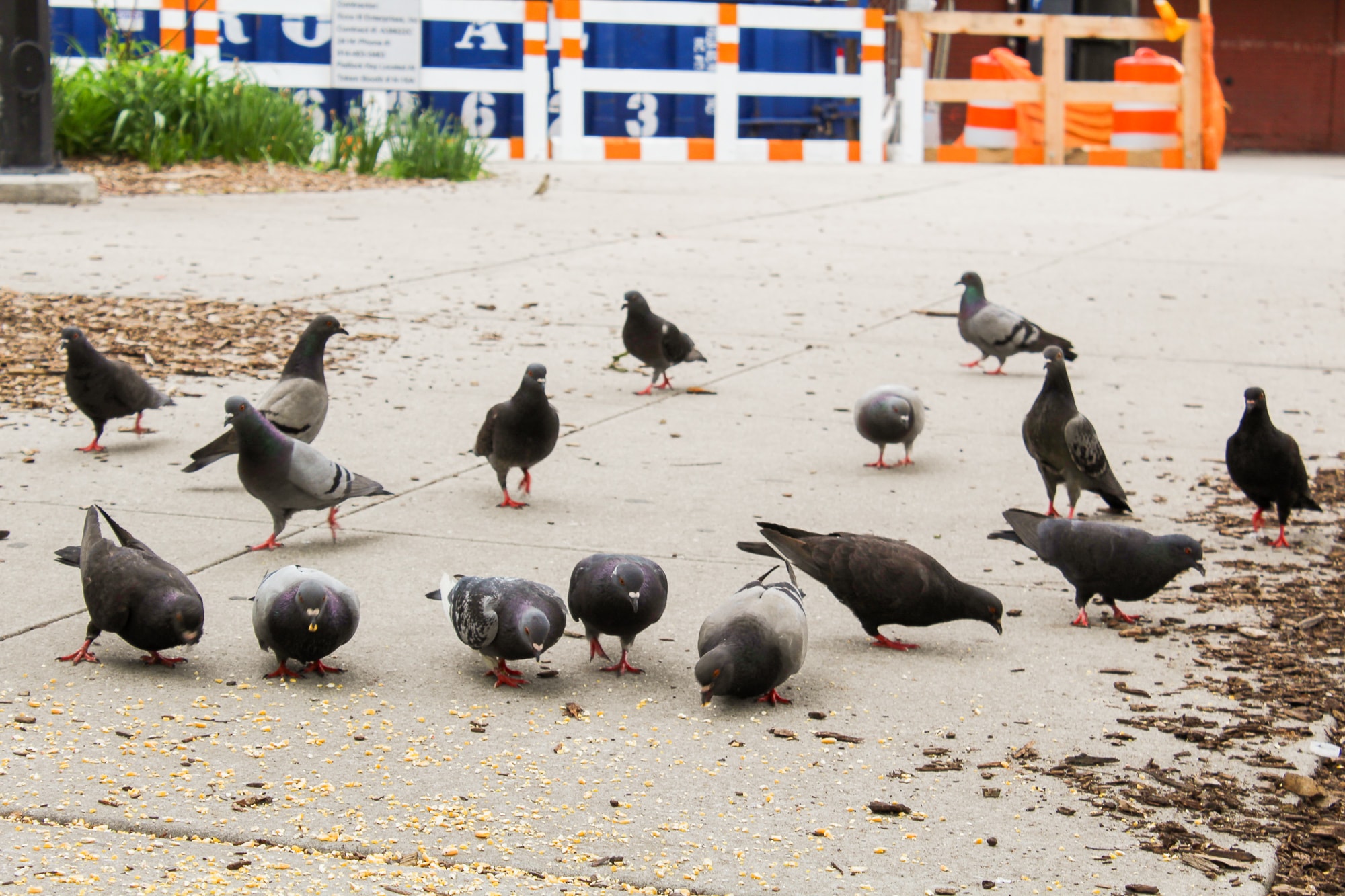
Credit: Christie Taylor
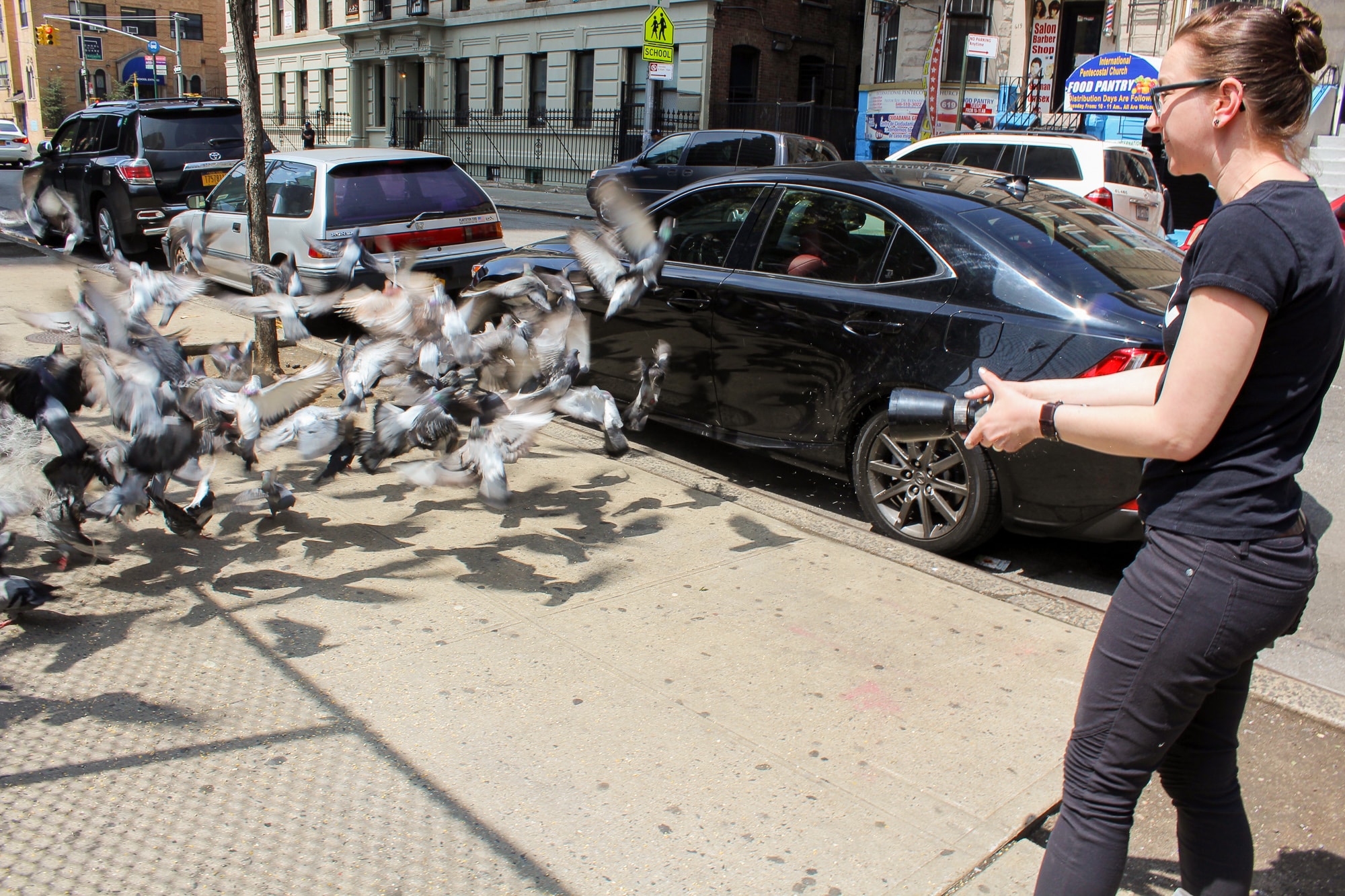
Carlen's secret weapon is a CO2-powered net gun. She's caught as many as 13 pigeons in her net in one sampling attempt, but three is a more common catch. Credit: Christie Taylor
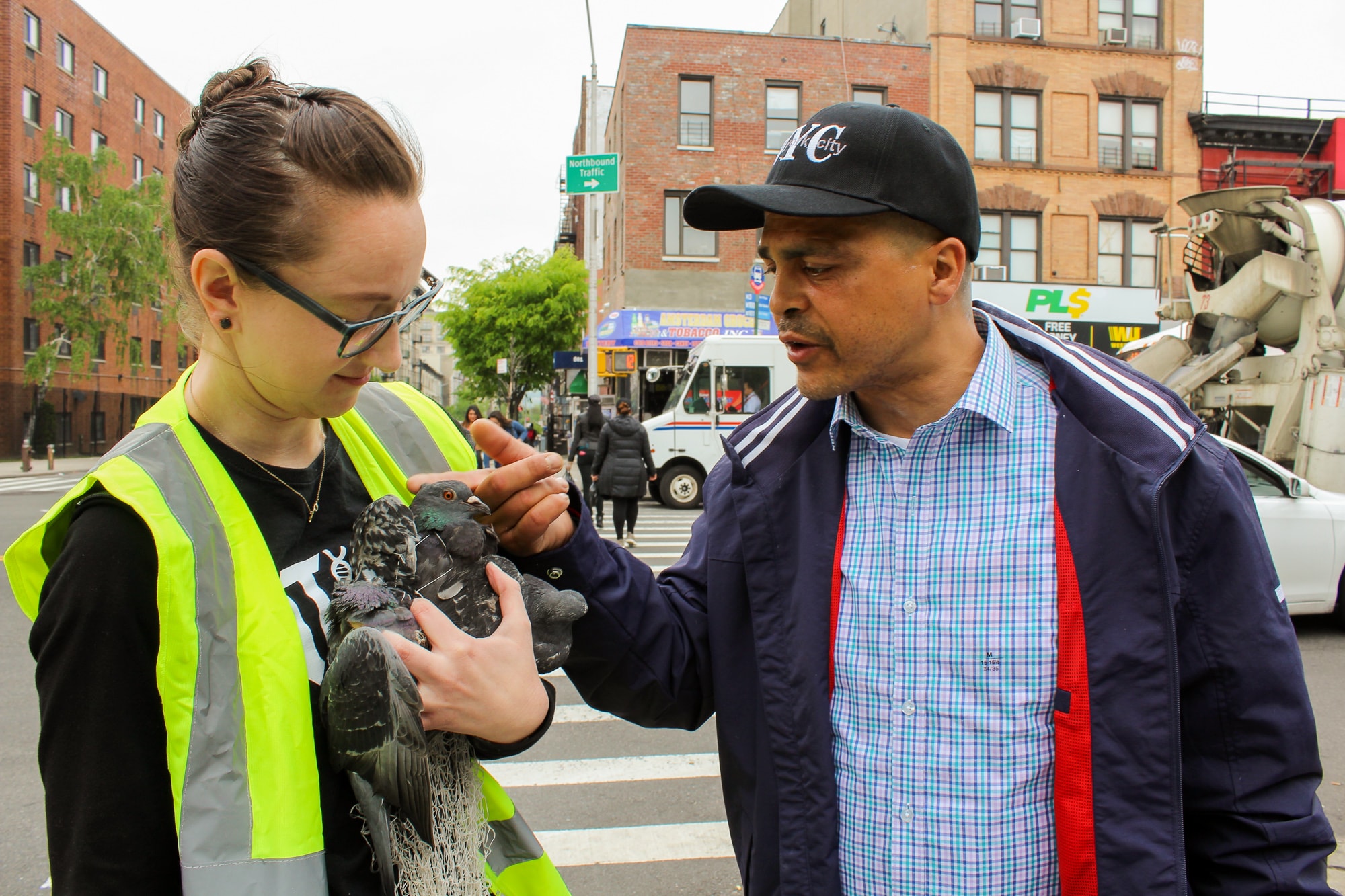
A resident of the Upper West Side in Manhattan approaches to admire Carlen's catch. Curious New Yorkers are common spectators when Carlen does her work and she says she welcomes these encounters as opportunities to educate city residents about their wildlife neighbors. Credit: Christie Taylor
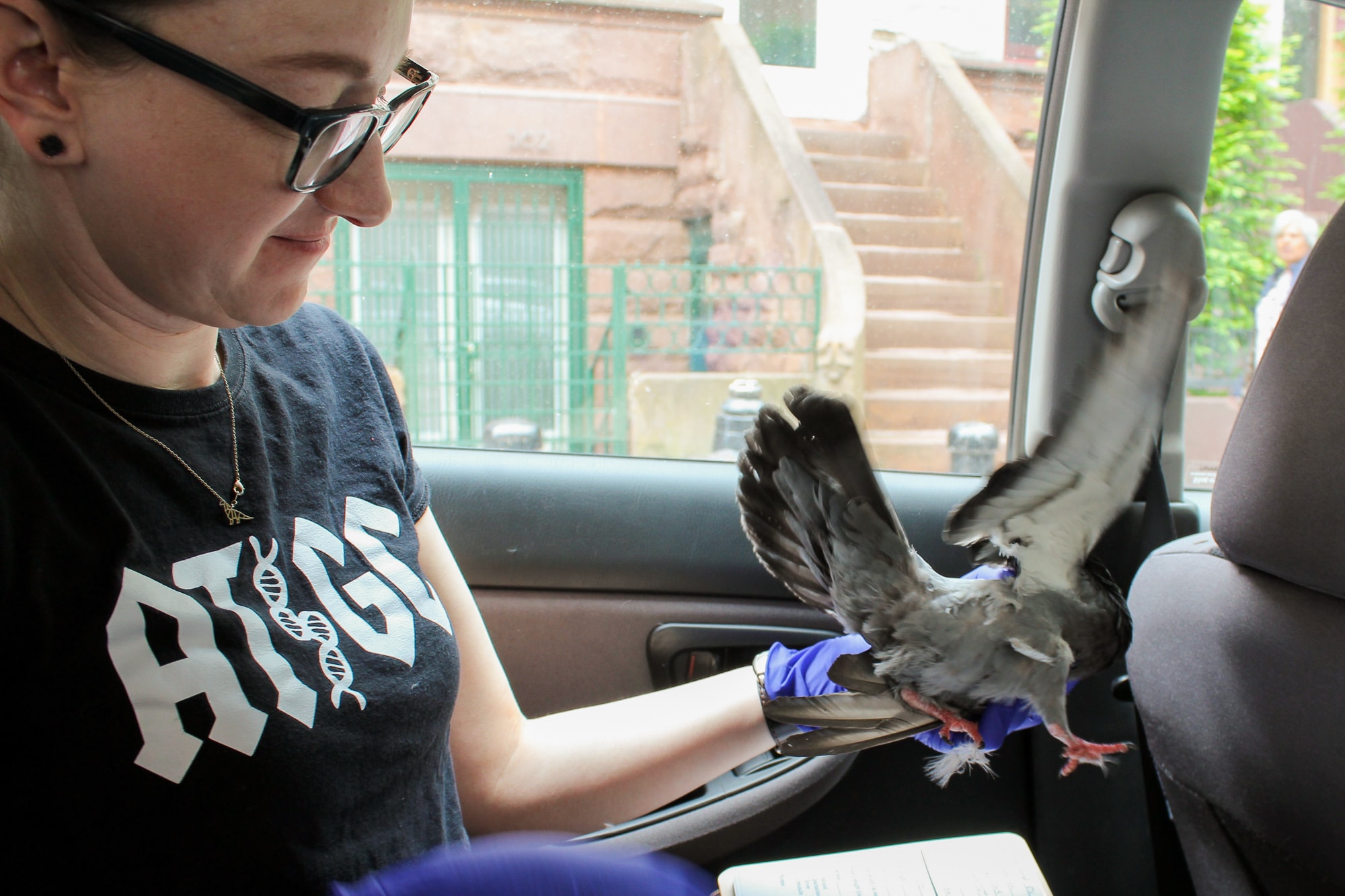
Once caught in a net or held gently by the belly, city pigeons seem to stay pretty calm. But sometimes Carlen's car and clothes can get covered in feathers. Credit: Christie Taylor
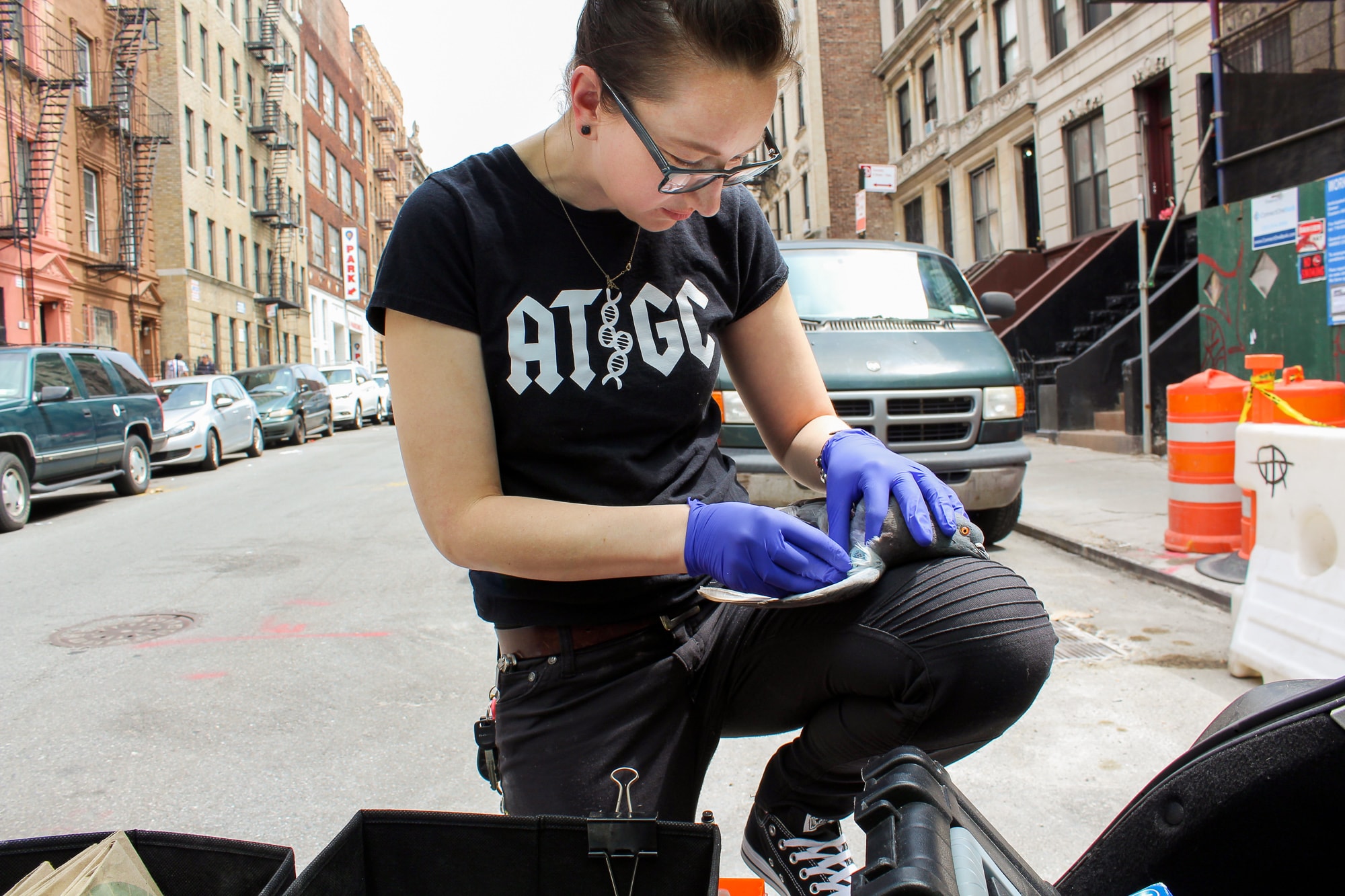
The pigeon's blood is Carlen's main prize. She takes a small amount from a vein under the wing. Credit: Christie Taylor
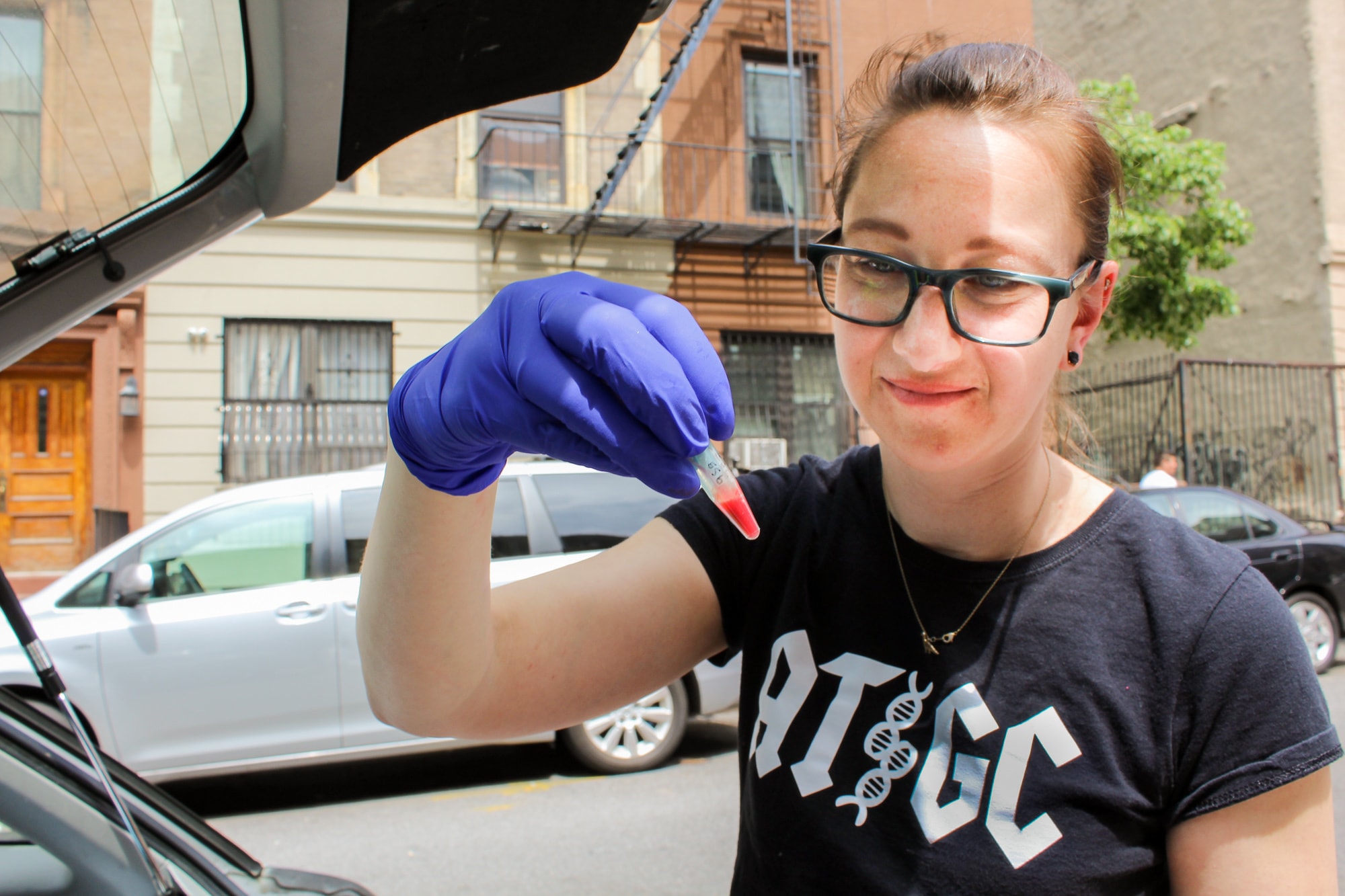
Carlen has taken hundreds of blood samples so far. The next phase of her work: Sequence the DNA from these samples and look for genetic markers that might tell her more about the pigeons of New York, Boston, and other East Coast cities. Credit: Christie Taylor
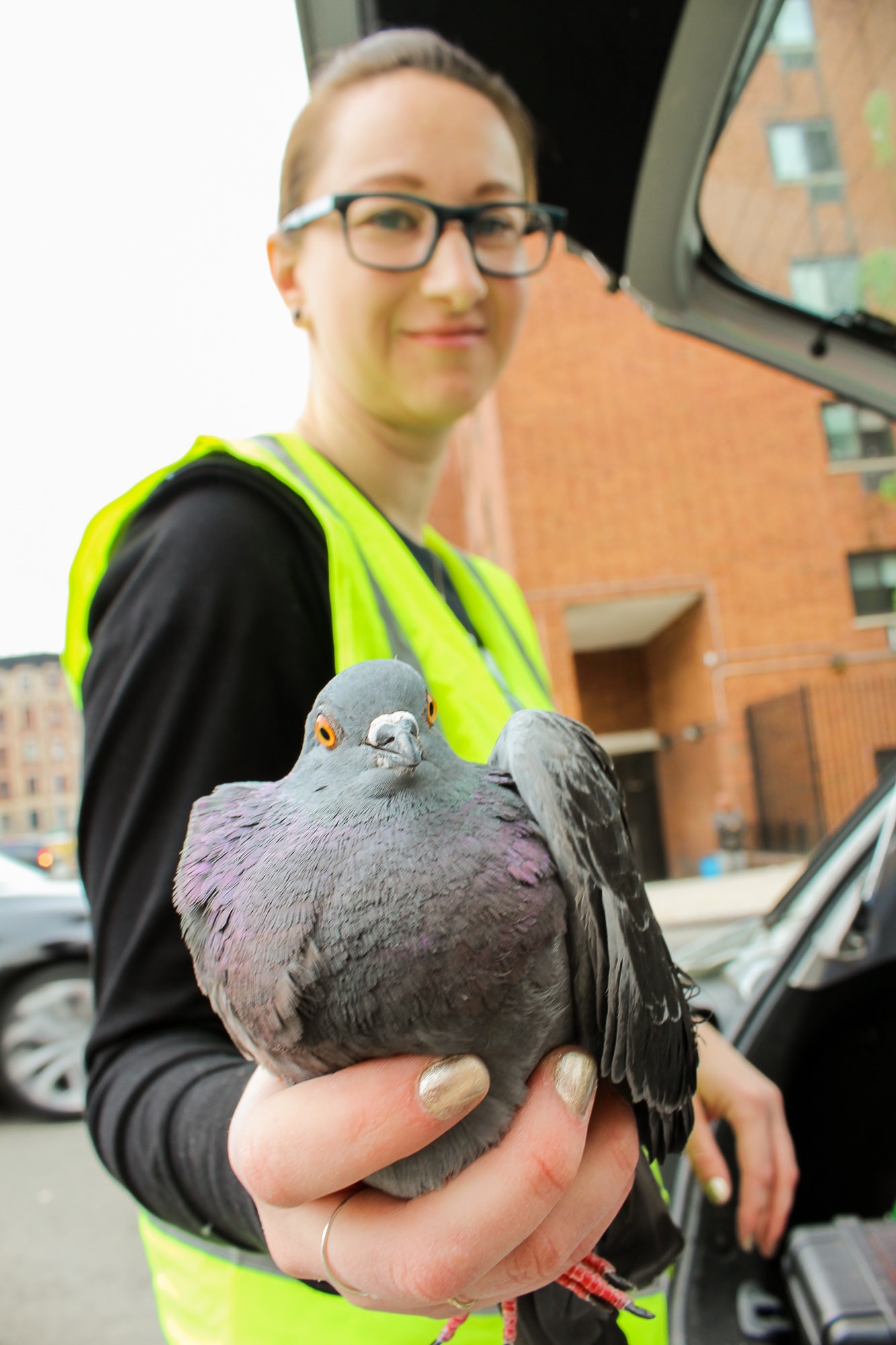
After Carlen collects samples and records her observations, she releases the pigeon and watches it return back into the wild of New York City. Credit: Christie Taylor
Audio postcard, words, and photos by Christie Taylor.
Digital editing by Lauren J. Young.
Christie Taylor was a producer for Science Friday. Her days involved diligent research, too many phone calls for an introvert, and asking scientists if they have any audio of that narwhal heartbeat.